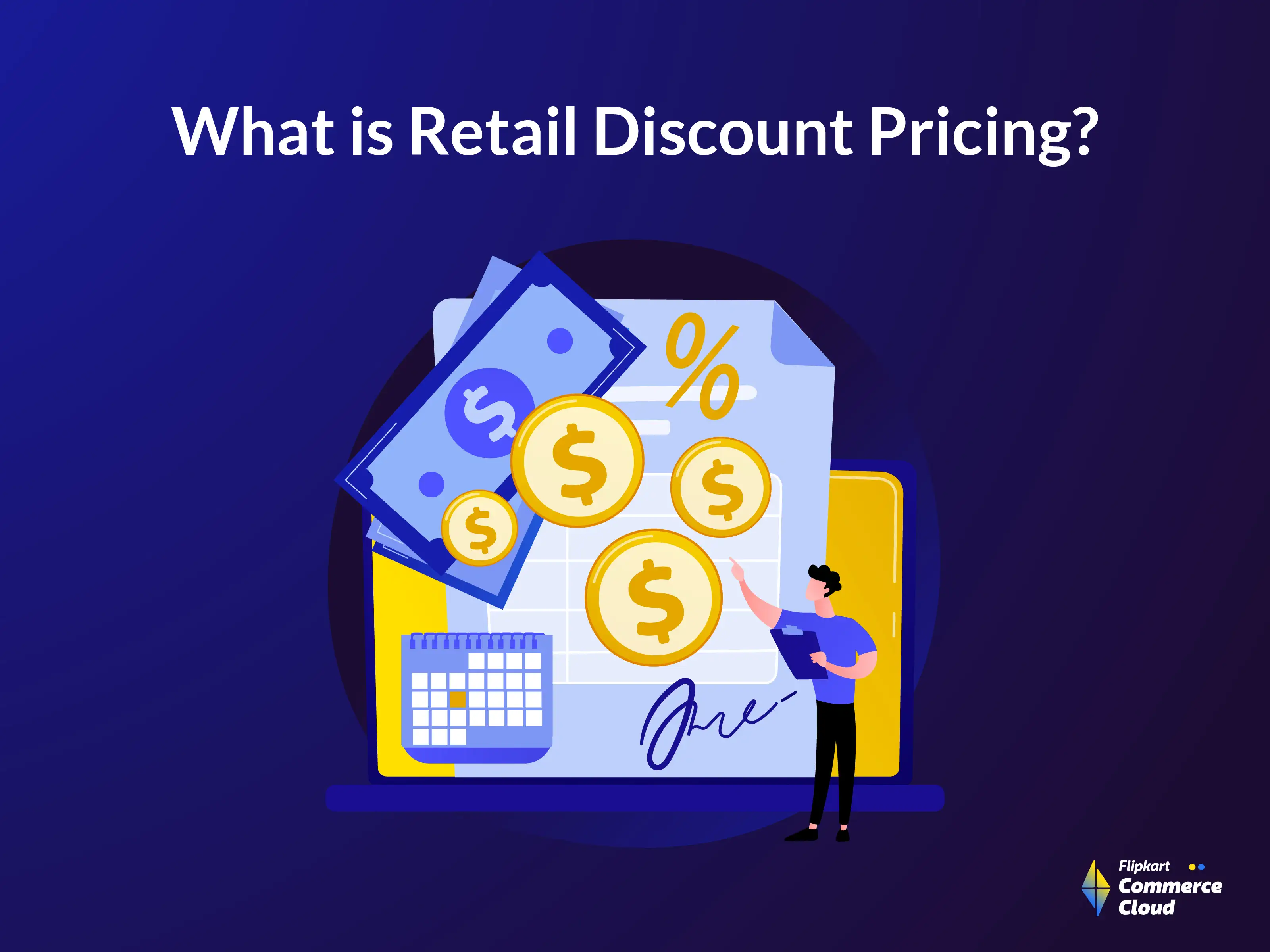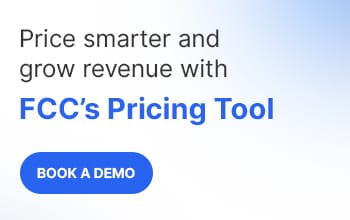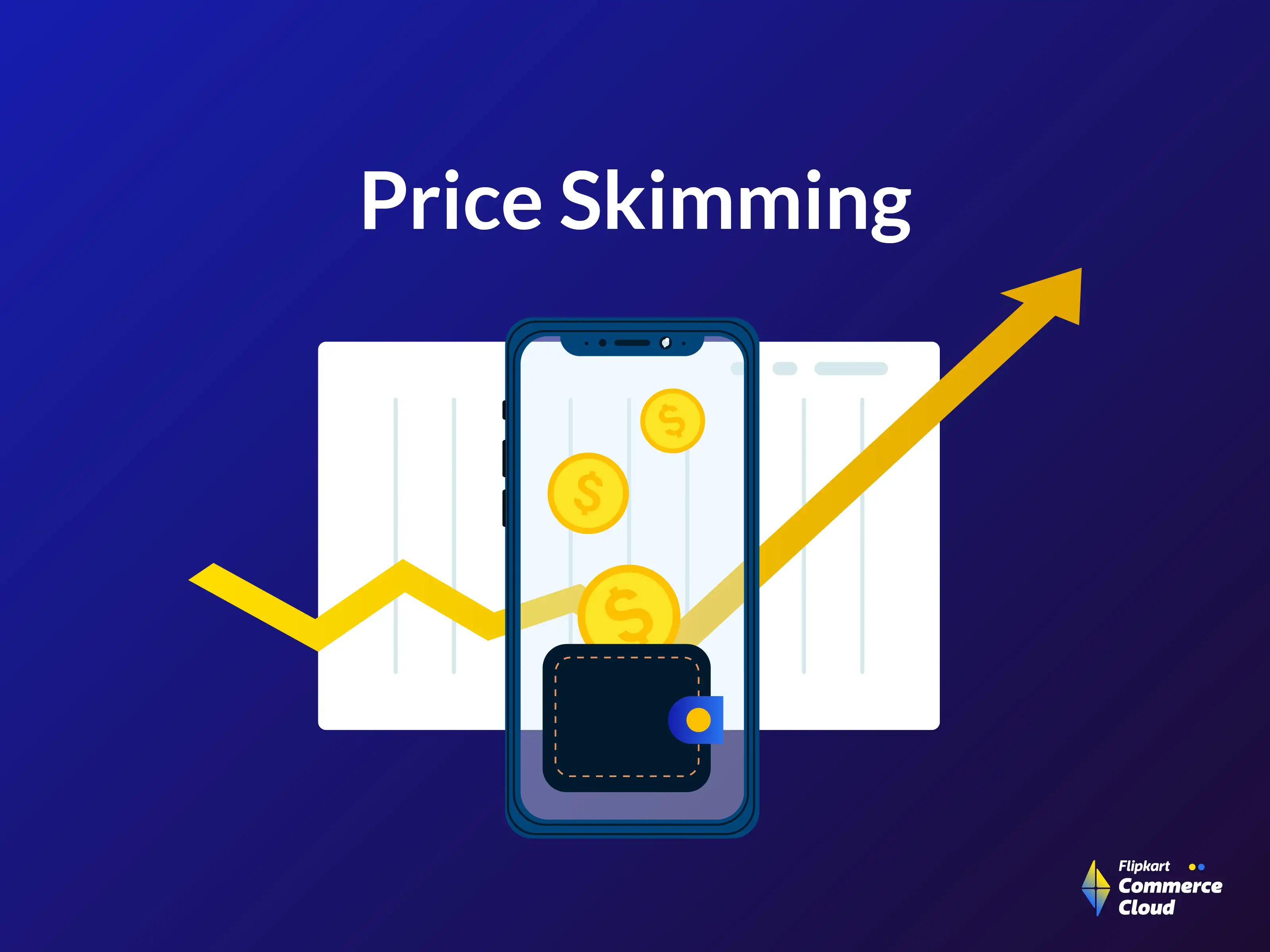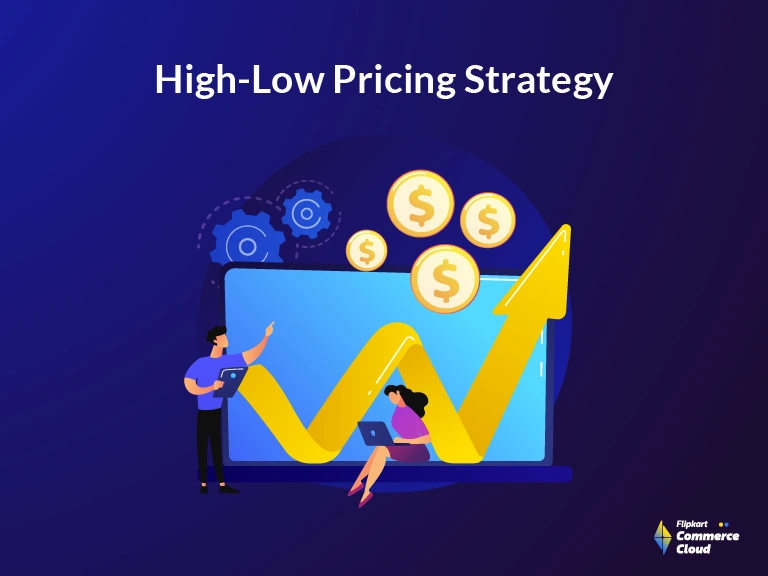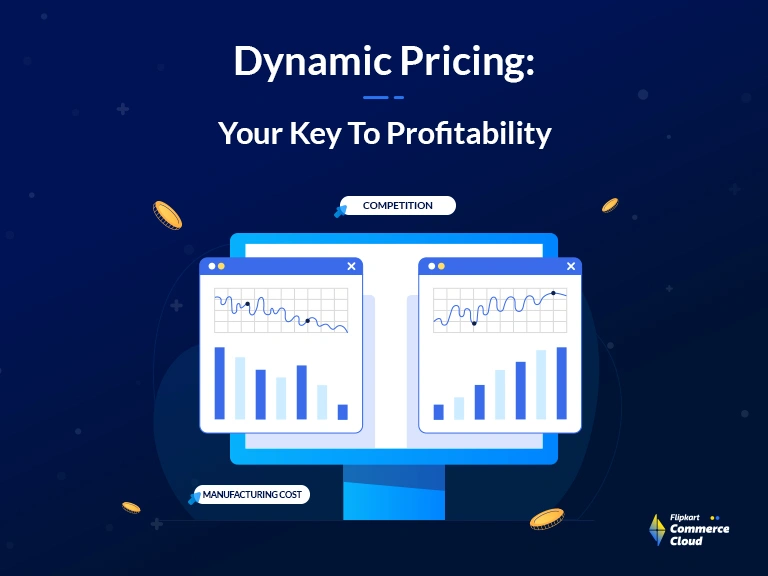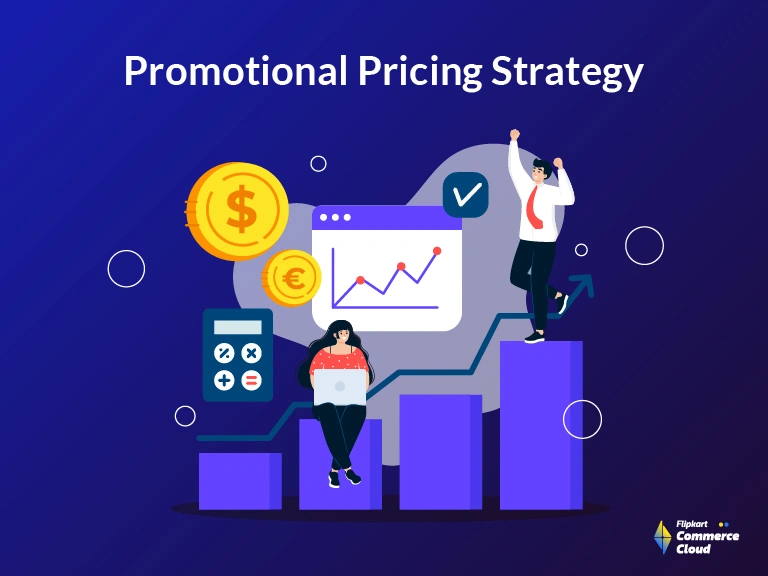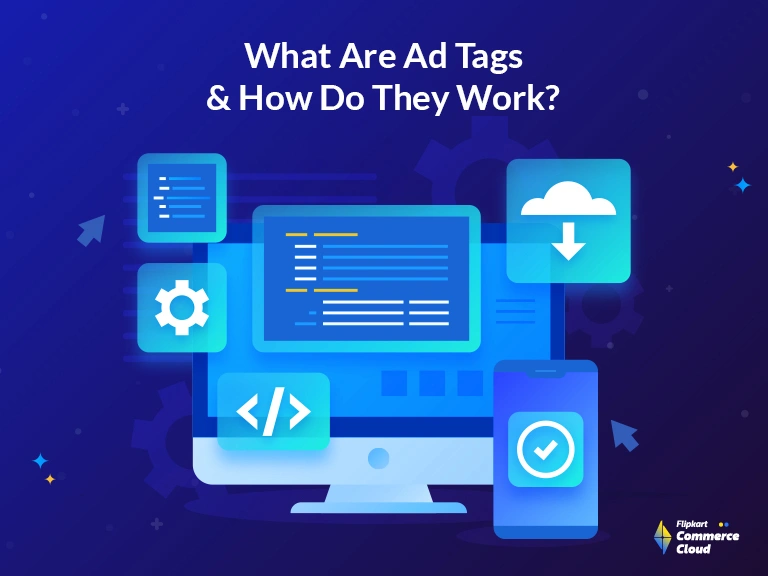As a retailer, it is imperative to strike a balance between offering value to the customers and maintaining profitable margins. Achieving this equilibrium is the primary motivation behind implementing a discount pricing strategy and driving the growth of your marketplace.
Discount pricing is beyond just reducing the prices of a product; it focuses on strategically using discounts to attract customers, drive sales, and outshine competitors. But how do you leverage discount pricing methodology effectively without compromising profits or brand value?
This blog covers the important aspects of discount pricing, including different discount pricing methods, their pros and cons, and how to use this strategy to drive growth for your retail platform.
What is a Discount Pricing Strategy?
Discount pricing is a method that involves reducing the price of your products or services for a limited period to stimulate customer interest and increase sales volume.
As a retailer, you might wonder why you should consider offering discounts. The answer lies in the power of perceived value. When customers see a discounted price, they perceive that they are getting more value for their money, which can be a strong incentive to make a purchase.
However, implementing a discount pricing strategy is not as simple as it might seem; it requires careful planning and consideration. You must determine the right discount level that will attract customers but will not erode your profit margins; this can help you clear out inventory, attract new customers, and re-engage old ones. You also need to consider the timing of your discounts to maximize their impact.
You have to strike a balance while following this method, as overdoing discounts can lead to a perceived devaluation of your products, whereas underdoing them might not generate the desired customer interest.
Setting Up Different Types of Discount Pricing Strategies
Here are some of the popular discount pricing strategies that you can consider for your retail platform:
Quantity Discounts
Quantity discounts are a popular way to encourage customers to make bulk purchases. By offering a better deal for bigger orders, you can encourage the consumers to purchase a higher quantity, enhancing your overall sales volume. For example, you might offer a 10% discount for orders of 10 or more units.
To implement an effective quantity discount strategy, consider the following best practices:
- Focus on products with high demand and low inventory levels to maximize the impact of your quantity discounts.
- Determine the discount percentage that will incentivize customers to make bulk purchases without sacrificing profit margins.
- Ensure that customers understand the terms and conditions of your quantity discounts to avoid confusion.
Percentage Discounts
Percentage discounts are another common type of discount used to attract customers and boost sales. By reducing a certain percentage from the original price, you can create a perception of urgency and persuade the customers to make a purchase.
To leverage percentage discounts effectively, consider the following strategies:
- Use percentage discounts to target specific customer segments, such as first-time buyers or loyal customers.
- Use these discounts to manage pricing effectively, ensuring that you maintain a competitive edge while protecting profit margins.
- Continuously monitor the effectiveness of your percentage discounts and adjust them as needed to optimize their impact.
Cash Discounts
Cash discounts involve offering a price reduction to customers who choose to pay with cash instead of credit. This strategy can influence customer behavior, improve cash flow, and drive sales growth.
Here are some best practices for implementing cash discounts:
- Make sure your customers are aware of the cash discount offer. Advertise it prominently at your store’s entrance and checkout area.
- Determine a fixed discount amount for cash payments that is substantial enough to motivate customers to pay in cash.
- Display the cash discount on customer receipts as a reminder for customers about the savings they made, encouraging them to continue choosing cash payments.
BOGO (Buy-One-Get-One) Discounts
BOGO discounts are a popular strategy that can significantly boost customer engagement and sales. The concept is simple: buy one product, get another one free or at a discounted price.
Here are some insights on how to effectively implement BOGO discounts:
- Strategically time your BOGO promotions. For example, run BOGO promotions during high-sales seasons like the holiday season or Black Friday.
- Make sure that the consumers understand the terms and conditions of your BOGO deals. Clear communication can help avoid confusion and enhance customer satisfaction.
- Make sure the products you choose for BOGO deals complement each other and appeal to your target audience.
Loss Discounts
Loss discounts, also known as loss leaders, involve selling a product at a price that may not be profitable but can attract customers. The idea is to attract customers with a highly discounted item, hoping they will also buy other items at regular prices.
Here are some best practices for implementing loss discounts:
- The product you choose for a loss discount should be popular and in demand. It should be something that can draw customers in.
- To prevent a significant loss, limit the quantity of the discounted item that each customer can purchase.
- Use the opportunity to promote other products at regular prices. The goal is to get customers to buy more than just the discounted item.
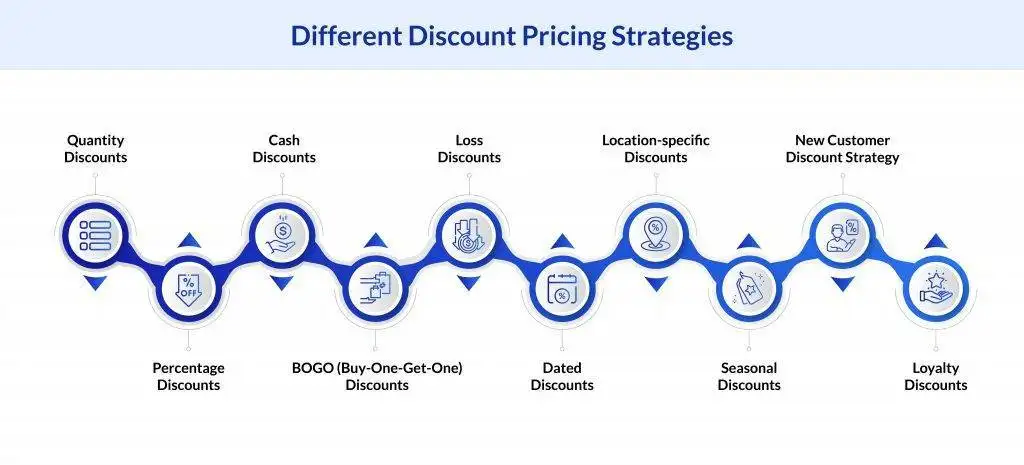
Dated Discounts
Dated discounts are time-limited offers that can create a feeling of urgency in the consumers and drive immediate buying decisions.
Here are some insights on how you can effectively implement dated discounts:
- Choose products that are in high demand for your dated discounts. These are likely to attract more customers.
- The discount should be substantial enough to encourage the customers to buy but not so high that it will hurt your profits.
- Make sure your customers understand that the discount is time-limited. This can create a sense of urgency and encourage them to buy before the offer expires.
Location-specific Discounts
Location-specific discounts are a strategic tool that allows you to offer special promotions based on a customer’s geographic location. This strategy is particularly relevant in targeting specific customer segments and tailoring pricing strategies to maximize sales and customer engagement.
Here are some best practices for implementing location-specific discounts:
- Focus on regions with high demand for your products to maximize the impact of your location-specific discounts.
- Providing special offers and price reductions tailored to customers in specific regions can be a successful strategy to boost interaction and revenue.
- Use location data to understand regional preferences and trends and tailor your discounts accordingly.
Seasonal Discounts
Seasonal discounts are time-limited offers that align with specific seasons or holidays. They can be highly effective in driving sales by capitalizing on seasonal trends and holidays. Here are some best practices for implementing seasonal discounts:
- Use seasonal discounts during high-sales seasons like the holiday season or Black Friday to capitalize on periods of peak spending.
- Use seasonal promotions to drive sales for new or in-season products.
- Leverage seasonal sales as a chance to liquidate merchandise from the last season.
New Customer Discount Strategy
New customer discounts are a strategic approach to attract new buyers and transform them into regular customers. This strategy involves offering special discounts or deals to new customers, incentivizing them to make their first purchase.
Here are some best practices for implementing a new customer discount strategy:
- When visitors land on your site for the first time, they may not be prepared to make a purchase immediately. Rather than presenting them with a discount code to use instantly, request a smaller commitment, such as their email address, in return for a discount code.
- Customize the rewards, offers, discounts, and promotions on the consumer’s preferences, values, and shopping habits.
- Make sure your target segment knows the offer is exclusive to them. This makes the offer more relevant, which will increase conversions.
Loyalty Discounts
Loyalty discounts are a key component of customer retention strategies. They reward repeat customers for their continued patronage. These discounts can foster customer loyalty, increase repeat purchases, and enhance customer lifetime value.
Here are some best practices for implementing loyalty discounts:
- Loyalty programs create a strong bond between the brand and the customer, transforming a simple business-customer relationship into a thriving community of brand advocates.
- An easy-to-understand rewards and redemption structure enables consumers to engage and visualize their rewards, increasing participation and spending.
- Tailor the rewards to the customer’s preferences and shopping habits to make them feel valued and appreciated.
Discount Pricing Strategy Examples
Let’s look at how two major retailers, Costco and Best Buy, have successfully implemented discount pricing strategies.
Costco Pricing Strategy
Costco, the third biggest retail player in the world, has pioneered a unique approach to discount pricing. Their strategy revolves around membership-based discounts and bulk buying incentives. Costco prices products at a 14-15% markup above costs, which positions the brand firmly within the wholesale market prices. This results in an average profit margin of just 2-3%, significantly lower than the average retailer’s gross margin.
The secret to Costco’s success lies in its membership model. Their warehouse retail stores are membership-only, which forms the foundation of their extremely successful business model. By minimizing costs and passing on the savings to their members, Costco ensures that their prices remain highly competitive. This strategy not only attracts price-conscious customers but also fosters customer loyalty, contributing to high sales volumes.
Best Buy Pricing Strategy
Best Buy, a prominent consumer electronics retailer, employs a variety of discount pricing methods to remain competitive and attract price-sensitive customers. Their pricing strategy includes seasonal promotions, clearance sales, and a price match guarantee.
Best Buy regularly monitors market prices and offers a price match guarantee, matching or beating prices of eligible products found at competitors. This ensures competitive pricing and provides customers with the best value for their purchases. In addition, Best Buy’s seasonal promotions and clearance sales help attract customers and boost sales.
The Pros of a Discount Pricing Strategy
Here are some of the key advantages of using discounts to drive sales and growth:
Generate Quick Interest in Your Products
Offering discounts can create immediate interest and urgency among customers, leading to a spike in sales. When customers see a good deal, they are often compelled to act quickly to take advantage of the savings. This strategy can be particularly effective for new products or services that need to gain traction in the market.
Encourage Repeat Purchases
Discount strategies, such as loyalty programs, can encourage customers to return and make additional purchases. By rewarding repeat customers with exclusive discounts, you can foster a sense of loyalty and encourage them to continue buying from you.
Sell Excess Inventory
Temporary lower prices can be an effective way to clear out surplus stock and create space for new products. By offering discounts on slow-moving items, you can reduce inventory levels and free up storage space for more profitable products.
Increase Sales and Volume
Discounts can boost overall sales and transaction volumes, leading to increased revenue. By offering discounts on a wide range of products, you can attract more customers and also increase the average order value.
Convert Wavering Customers
Strategic discounting can persuade undecided customers to make a purchase. By offering a compelling discount, you can build a sense of urgency and encourage customers to take action. This strategy can be particularly effective for customers who are on the fence about making a purchase.
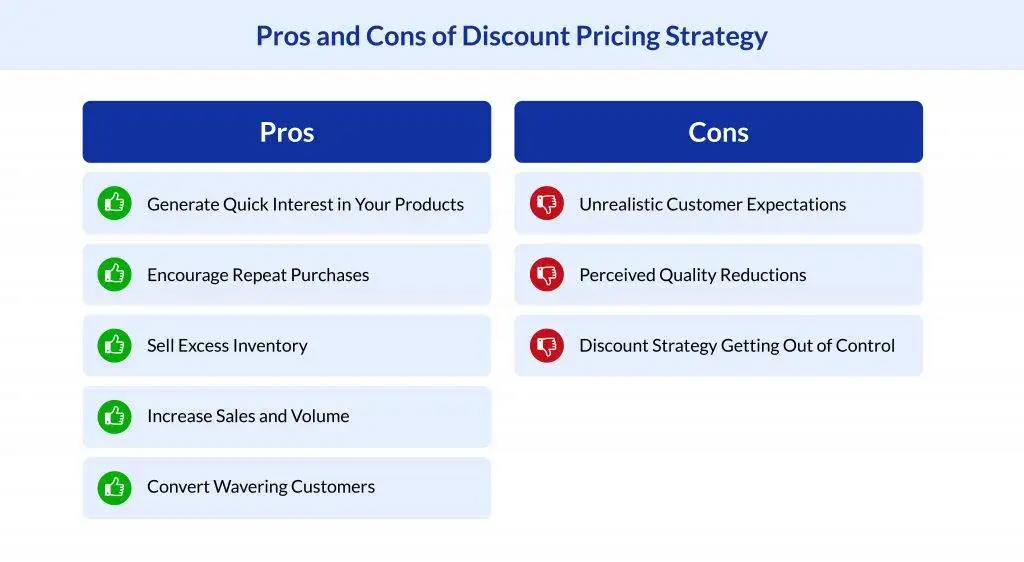
The Cons of a Discount Pricing Strategy
Here are some of the challenges that you may encounter with a discount pricing strategy:
Unrealistic Customer Expectations
Frequent discounts can lead customers to expect lower prices consistently, which may hurt profitability in the long run. If customers become accustomed to buying your products or services at a discounted price, they may be reluctant to pay the full price in the future. This can put pressure on your profitability and make it challenging to sell products at their original price.
Perceived Quality Reductions
Excessive discounting can lead customers to question the quality of products, potentially damaging brand reputation. If consumers perceive that discounts are being offered due to poor quality or outdated products, it can undermine trust in the brand and make it harder to sell at full price in the future.
Discount Strategy Getting Out of Control
Over-relying on discounts can erode profit margins and create unsustainable pricing practices. If discounts become the primary driver of sales, it can be challenging to maintain profitability and can result in a race to the bottom in terms of pricing. This can be particularly problematic in highly competitive markets where discounts are used as a primary means of differentiation.
In such cases, you would need a robust technology trained on real data points that take into account market trends as well as your direct and indirect competitors. The pricing product by Flipkart Commerce Cloud combines a rule-based pricing engine with competitor intelligence and a price optimization module. Our multi-layered, ML-powered, competitor intelligence module offers end-to-end integrated competitor crawling and matching with 98% precision, letting you set a winning discount strategy every time.
Why You Should Combine a Discount Pricing Strategy with Others
Discount pricing is indeed a powerful tool, but it is even more effective when combined with other marketing and retail pricing strategies. By integrating discounts with complementary approaches, you can create a more holistic and impactful pricing strategy that drives sales, increases customer loyalty, and maximizes profitability.
- Bundling and Cross-Selling: Bundling products together can add value for customers while still offering discounts. By pairing complementary items, you can increase the average order value and encourage customers to make more comprehensive purchases. This approach can be really effective when combined with strategic discounts that incentivize customers to buy the bundle.
- Personalized Discounts: Personalized discount offers can be more effective by targeting specific customer segments. By analyzing customer data, you can tailor your discounts to the preferences and shopping habits of individual customers. For instance, you might offer a personalized discount on a customer's favorite brand or product category. This can enhance customer satisfaction and increase the likelihood of a purchase.
- Loyalty Programs: Integrating discount strategies into loyalty programs can maximize customer retention and lifetime value. By offering exclusive discounts to loyal customers, you can incentivize repeat purchases and foster long-term customer relationships.
Optimize Your Discount Pricing Strategy with Flipkart Commerce Cloud (FCC)
As a retailer, implementing and managing effective discount pricing strategies can be complex and time-consuming. You must leverage advanced pricing platforms to streamline the implementation and management of your discount pricing strategies. That's where the FCC Pricing Manager can help. It is an advanced pricing platform that presents a range of tools created to help optimize your pricing strategies, including discount pricing.
The Pricing Manager is equipped with:
- Pricing Optimizer, a pricing engine based on demand elasticity, employs proprietary optimization algorithms that incorporate game theory with traditional statistical methods.
- Dynamic Pricing, a powerful rule-based pricing engine, coupled with an elaborate insights and analysis tool for implementing your optimal pricing strategy.
- Competitive Intelligence feature allows you to track any competitor, at scale, for any type of data available online.
The benefits of Flipkart Commerce Cloud extend beyond its robust features. Throughout your business partnership journey, you'll have access to consultation services from a team of pricing and technology experts who will collaborate with your internal team during implementation and scaling up.
That’s not all; Flipkart Commerce Cloud can build the entire marketplace for you, customizing it to fit your needs and cater to your customers. This means you can tailor your discount pricing strategies according to your business model and customer base.
Get in touch with team FCC to learn how we can help you improve your bottom line with commerce intelligence.
